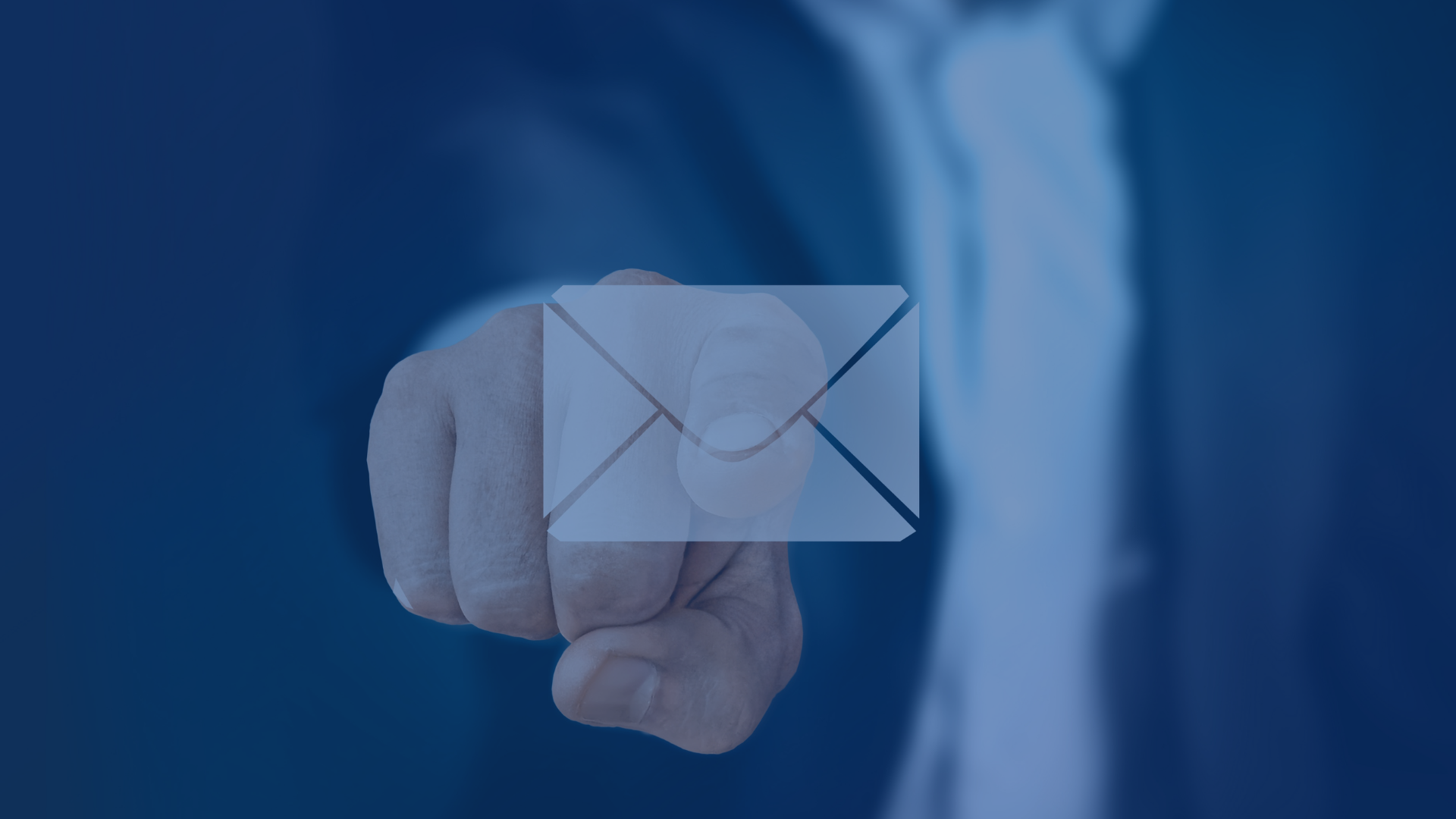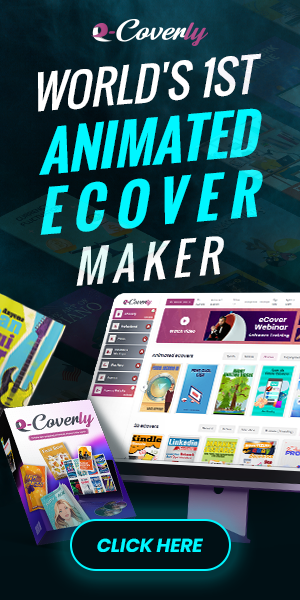Email Marketing for Ecommerce: Boosting Sales and Customer Engagement
Email marketing has become an essential channel for e-commerce businesses to connect with customers, boost sales, and drive revenue. In today's digital age, email marketing remains one of the most effective ways to engage with customers and foster long-term relationships.
With the right strategies and tools, email marketing can help your e-commerce business stand out from the competition and grow your customer base. Whether you're an established online retailer or just starting out, a well-executed email marketing campaign can make all the difference.
Key Takeaways:
- Email marketing is a powerful tool for e-commerce businesses to engage with customers and drive sales.
- An effective email list is critical for successful email marketing campaigns.
- Compelling email content is key to engaging with subscribers and driving conversions.
- Mobile optimization and personalization are essential for email campaigns in today's digital landscape.
- Integrating email marketing with other marketing channels can drive results and maximize ROI.
Why Email Marketing is Essential for Ecommerce Success
If you own an e-commerce business, you know the importance of connecting with your customers and driving sales. While there are a variety of marketing channels to choose from, email marketing remains one of the most effective ways to reach your target audience and boost your bottom line.
Here are a few reasons why:
"Email marketing has an average ROI of $42 for every $1 spent."
- DMA National Email Client Report 2019
Yes, you read that right. Email marketing is one of the most cost-effective marketing channels available, delivering a high return on investment for e-commerce businesses. In fact, a recent study found that email marketing drives more conversions than any other marketing channel, including search and social media.
But email marketing isn't just about increasing sales; it also helps to build customer loyalty and brand awareness.
"Email subscribers are 3x more likely to share content on social media than leads who came through another channel."
- QuickSprout
By sending regular email updates and promotions to your subscribers, you can strengthen your relationship with your customers and keep your brand top of mind. When your subscribers share your content on social media, they are effectively endorsing your brand to their own networks, expanding your reach and driving new traffic to your e-commerce site.
So, if you're not already incorporating email marketing into your e-commerce strategy, now is the time to start. With the right approach and execution, email marketing can help you achieve eCommerce success and build lasting customer relationships.
Building an Effective Email List
Building an email list is crucial for successful email marketing. Your email list is the foundation of your email campaigns and the key to reaching your target audience. Here are some effective strategies for growing your subscriber base:
- Create compelling lead magnets: Offer incentives such as discounts, free guides, or exclusive content in exchange for email sign-ups. Make your offer clear and appealing to your target audience.
- Optimize your opt-in forms: Place opt-in forms in prominent locations on your website, such as the homepage, blog pages, and product pages. Use clear and concise language to explain the benefits of signing up.
- Segment your list: Segment your email list based on subscriber behavior, preferences, and demographics. This allows you to send targeted campaigns that are more relevant and personalized.
- Partner with complementary businesses: Collaborate with other businesses in your industry to promote each other's email lists and attract new subscribers.
- Run social media ads: Use social media platforms like Facebook and Instagram to run ads and promote your email list. Use strong visuals and persuasive copy to entice people to sign up.
- Host a contest or giveaway: Offer a prize in exchange for email sign-ups. This is an effective way to generate buzz and attract new subscribers.
By implementing these strategies, you can build a high-quality email list that is engaged and receptive to your email campaigns. Remember to regularly clean your email list by removing inactive subscribers to maintain a healthy list and improve deliverability rates.
Crafting Compelling Email Content
One of the most critical elements of a successful email marketing campaign is crafting compelling email content that resonates with your target audience. Whether you're announcing a new product launch, promoting a sale, or simply keeping your customers informed, your content needs to be engaging, relevant, and actionable.
Writing Attention-Grabbing Subject Lines
The subject line is the first thing your subscribers will see in their inbox, so it's essential to make it count. A well-crafted subject line should be attention-grabbing, relevant, and concise. Avoid using spammy or click-baiting tactics, which could harm your email deliverability and dilute your brand reputation.
Example: "Exclusive Offer: Get 20% off Your Next Purchase"
Creating Engaging Body Copy
The body copy of your email should be concise, scannable, and easy to read. Use subheadings, lists, and bulleted points to break up the text and make it more digestible. Keep your messaging clear and focused, and avoid overwhelming your subscribers with too much information or too many calls to action.
Example: "Introducing Our New Product Line: Shop Now and Get Free Shipping"
Including Relevant Visuals
Visual content can be an effective way to grab your subscribers' attention and make your email more engaging. Consider including high-quality images, videos, or GIFs that complement your messaging and reinforce your brand identity. Be sure to optimize your visuals for smaller screens and avoid using large files, which could slow down your email load time.
Personalizing Your Emails
Personalization is another powerful way to increase the effectiveness of your email content. Use your subscriber data to segment your audience and tailor your messaging to their interests and preferences. Address your subscribers by name, and customize your content based on their purchase history, browsing behavior, or location.
Example: "Hi [First Name], We Thought You Might Like These Products Based on Your Recent Purchases"
By following these tips and strategies, you can create email content that resonates with your subscribers, drives engagement, and boosts your overall email marketing success.
Designing Mobile-Optimized Emails
In today's mobile-first world, it's essential to create emails that are optimized for mobile devices. With more and more people accessing their emails on phones and tablets, designing mobile-friendly emails is crucial to ensure your message reaches your audience effectively.
The Importance of Responsive Email Templates
One of the best ways to create mobile-optimized emails is by using responsive email templates. These templates automatically adjust the layout of your email to fit different screen sizes, ensuring that your content is easy to read and navigate on any device.
Responsive email templates also eliminate the need for horizontal scrolling, a frustrating experience for mobile users. By using these templates, you can create a seamless user experience that keeps your subscribers engaged with your content.
Mobile-Friendly Email Layouts
In addition to using responsive email templates, it's important to design email layouts that are mobile-friendly. This means using a single-column layout and avoiding complex design elements that may not render properly on smaller screens.
Consider using larger font sizes and buttons, ensuring that they are easy to click on and navigate with a finger. Also, avoid including too much text in your email. Instead, focus on creating concise, compelling copy that encourages readers to click through to your website or product pages.
Optimizing Images for Mobile
Images can add visual interest to your emails and help to convey your message effectively. However, images that are too large or take too long to load can cause frustration for mobile users, leading to high bounce rates or unsubscribes.
To optimize images for mobile, it's important to compress them and reduce their file size. You can also use alt tags to describe the contents of your images, ensuring that they are accessible to readers who may have images disabled on their devices.
The Bottom Line
Designing mobile-optimized emails is essential to ensure that your message reaches your audience effectively. By using responsive email templates, designing mobile-friendly layouts, and optimizing images, you can create a seamless user experience that keeps your subscribers engaged with your brand.
Personalization and Segmentation Strategies
Personalization and segmentation are essential components of effective email marketing for e-commerce businesses. By tailoring your email campaigns to individual customer preferences and behaviors, you can improve engagement, increase conversions, and build long-term customer loyalty.
Personalization
Personalization involves using customer data to create highly relevant and targeted email content. By analyzing data such as purchase history, browsing behavior, and demographic information, you can craft personalized messages that resonate with individual customers on a deeper level.
"Personalization is key to creating an emotional connection with your audience. It lets you show customers that you understand their needs and preferences, which builds trust and fosters loyalty." - John Smith, Email Marketing Expert
Personalization can take many forms, from adding the recipient's name to the subject line or email greeting to recommending products based on their past purchases or browsing behavior. The key is to use personalization in ways that feel genuine and helpful, rather than intrusive or impersonal.
Segmentation
Segmentation involves dividing your email list into distinct groups based on shared characteristics or behaviors. By targeting specific segments with tailored messages, you can improve relevance and engagement, and drive more conversions.
| Segment | Criteria | Example |
|---|---|---|
| New Customers | Customers who have made their first purchase within the last 30 days | Welcome emails, personalized recommendations |
| Lapsed Customers | Customers who haven't made a purchase in over 90 days | Abandoned cart reminders, exclusive offers |
| High-Value Customers | Customers with a lifetime value above a certain threshold | VIP promotions, early access to sales |
Segmentation can be based on a wide range of criteria, including purchasing behavior, geographic location, age, gender, and more. The goal is to identify groups that share common needs or interests and create targeted messages that address those needs in a personalized way.
By leveraging the power of personalization and segmentation in your email marketing campaigns, you can improve engagement, increase conversions, and build lasting relationships with your customers.
Automating Email Campaigns
Email marketing can be time-consuming, especially when you have to create and send emails manually. This is where email automation comes in, allowing you to create and schedule automated email campaigns that respond to specific customer behaviors, preferences, and actions. By automating your email campaigns, you save time, improve efficiency, and most importantly, deliver relevant and timely messages to your subscribers.
Benefits of Automating Email Campaigns
Automating your email campaigns comes with various benefits, including:
- Improved engagement: Automated emails have a higher open rate and click-through rate compared to broadcast messages, resulting in improved engagement with your subscribers.
- Increased revenue: Automated emails generate 320% more revenue than non-automated emails, making them a profitable marketing strategy for e-commerce businesses.
- Efficiency: Automated emails are created in advance, saving you time and allowing you to focus on other tasks.
- Personalization: Automated emails can be tailored to the individual subscriber's behavior, making them more relevant and personalized, and increasing conversion rates.
When it comes to automating email campaigns, there are several types of triggered emails that you can send:
| Type of Email | Description |
|---|---|
| Welcome email | Sent when a subscriber signs up for your email list to welcome them and set expectations for future communications. |
| Abandoned cart email | Sent when a customer adds products to their cart but doesn't complete the purchase to encourage them to come back and complete the transaction. |
| Product recommendation email | Sent to customers based on their browsing, purchase, or search history to recommend products they may be interested in. |
| Post-purchase email | Sent to customers after they make a purchase to thank them, ask for feedback, and offer additional products or services. |
| Re-engagement email | Sent to subscribers who haven't opened or clicked your emails in a certain period to re-engage them and encourage them to remain on your email list. |
How to Automate Your Email Campaigns
Automating your email campaigns involves the following steps:
- Identify the triggers: Determine the specific subscriber behavior or action that will trigger the automated email campaign, such as signing up for your email list or abandoning a cart.
- Create the email content: Craft the email content that will be sent to subscribers based on the trigger. Ensure that the message is relevant, personalized, and aligned with your brand voice.
- Set up the automation: Use email marketing software or marketing automation tools to set up the email automation workflow and specify the conditions that will trigger the email. For example, you can set up a condition that sends a welcome email to all new subscribers or an abandoned cart email to customers who leave items in their cart without checking out.
- Test and optimize: Test and optimize the automated email campaign by analyzing the performance metrics such as open rate, click-through rate, and conversion rate. Use A/B testing to experiment with different elements like subject lines, CTAs, and visuals to improve the campaign's effectiveness.
Analyzing and Optimizing Email Performance
Tracking Key Metrics
Some key metrics to track when analyzing your email performance include:
- Open rate: The percentage of recipients who opened your email.
- Click-through rate: The percentage of recipients who clicked on a link in your email.
- Conversion rate: The percentage of recipients who took a desired action, such as making a purchase or filling out a form.
- Bounce rate: The percentage of emails that were undeliverable and bounced back to you.
- Unsubscribe rate: The percentage of recipients who opted out of receiving future emails.
By tracking these metrics over time, you can identify trends and patterns that reveal what's working and what's not. For example, if you notice that your open rates are consistently low, it may be time to rethink your subject lines or segment your list more effectively.
Testing and Experimentation
One of the best ways to optimize your email performance is through testing and experimentation. A/B testing is a common approach, where you send two versions of an email to a small segment of your audience and compare the results to determine which version performs better.
When conducting A/B tests, it's important to only test one variable at a time to accurately measure the impact of each change. Some elements to consider testing include:
- Subject lines: Try different lengths, tones, and formats to see what resonates best with your audience.
- Call-to-action: Test different colors, text, and placement to see what drives the most clicks and conversions.
- Personalization: Experiment with personalized content, such as using the recipient's name or location in the email.
Improving Deliverability
To ensure that your emails are reaching your subscribers' inboxes, it's important to pay attention to email deliverability. This refers to the ability of your email to avoid spam filters and make it to the recipient's inbox.
Some best practices for improving email deliverability include:
- Get permission: Only send emails to subscribers who have opted-in to receive them.
- Clean your list: Regularly remove inactive subscribers and invalid email addresses.
- Use a reputable email service provider: Choose a provider with a good reputation for deliverability and follow their guidelines for best practices.
Integrating Email Marketing with Other Channels
Effective email marketing requires more than just sending promotional messages to your subscribers. To achieve optimal results, you must leverage email as part of a broader, multi-channel marketing strategy. By integrating email with other channels, you can amplify the reach and impact of your campaigns, foster deeper engagement with your audience, and drive conversions across multiple touchpoints.
Here are some effective ways to integrate email marketing with other channels:
Social Media
Social media platforms offer a powerful way to complement your email marketing efforts. By using social media to promote your emails, you can increase visibility and attract new subscribers. You can also use social media to engage with your audience in real time, build brand awareness, and drive traffic to your website.
Consider using social media to:
- Promote your email campaigns and encourage sign-ups
- Share your email content with your social media followers
- Run social media contests or giveaways to generate leads and grow your email list
- Engage with your audience by responding to comments and messages
Content Marketing
Content marketing is another effective way to integrate email marketing with other channels. By producing high-quality content that resonates with your target audience, you can build brand authority, establish thought leadership, and drive traffic to your website.
Consider using content marketing to:
- Create blog posts, infographics, and videos that align with your email content
- Promote your email campaigns through your content channels
- Include email sign-up forms on your blog and website
- Use email to distribute your content to subscribers and nurture leads
Paid Advertising
Paid advertising can be an effective way to complement your email marketing efforts and reach new audiences. By using paid advertising channels like Google Ads or social media ads, you can target specific demographics and drive traffic to your website or landing pages.
Consider using paid advertising to:
- Promote your email campaigns and encourage sign-ups
- Retarget previous website visitors or email subscribers with targeted ads
- Promote your products or services to new audiences
Integrating email marketing with other channels can help you maximize the impact of your marketing campaigns and achieve better results. By leveraging the unique strengths of each channel, you can create a cohesive, multi-channel marketing strategy that drives engagement, conversions, and customer loyalty.
Nurturing Customer Relationships through Email
Email marketing is a powerful tool for e-commerce businesses to nurture customer relationships. By sending thoughtful and targeted messages, businesses can keep customers engaged and encourage repeat purchases. Here are some strategies to help you build strong customer connections through email:
1. Welcome Emails
Send a warm welcome message to new subscribers to make them feel appreciated and valued. Personalize the message by using their name and offer a discount or free gift to incentivize first-time purchases. Use a clear call-to-action (CTA) to encourage them to browse your website and explore your products.
2. Abandoned Cart Reminders
When a customer abandons their cart, send a friendly reminder email to encourage them to complete their purchase. Include a clear visual of the item they left behind and add a sense of urgency by reminding them of limited stock or an upcoming sale. Don't forget to include a strong CTA to guide them back to their cart and complete the purchase.
3. Post-Purchase Follow-Ups
Show your customers that you care by sending a follow-up email after they make a purchase. Thank them for their business and ask for feedback on their experience. Offer helpful tips and resources related to their purchase and suggest complementary products they may be interested in. This will help to build brand loyalty and keep your business top-of-mind for future purchases.
4. Loyalty Programs
Encourage repeat purchases by offering a loyalty program for your customers. Send email updates to keep them informed of their progress and offer exclusive rewards and discounts. Use creative CTAs and subject lines to grab their attention and incentivize them to engage with your program.
5. Personalization
Use customer data to personalize your email messages. Address customers by name, include product recommendations based on their past purchases, and show them products that are relevant to their interests and preferences. This will help to create a more personalized experience and keep customers engaged with your brand.
Overall, email marketing is a powerful tool for nurturing customer relationships in e-commerce. By following these strategies, you can create impactful messages that engage customers and encourage repeat purchases. Remember to track your metrics and analyze your results to optimize your email campaigns and continue to improve your customer relationships.
Conclusion
In conclusion, email marketing is a powerful tool for e-commerce businesses looking to boost sales and engage with customers effectively. By building an effective email list, crafting compelling email content, and designing mobile-optimized emails, you can create campaigns that resonate with your target audience and drive conversions.
Personalization and segmentation strategies can further enhance the effectiveness of your campaigns while marketing automation tools can save time and increase efficiency. By analyzing and optimizing your email performance, you can continuously improve your results and achieve greater ROI.
Integrating email marketing with other channels, such as social media and content marketing, can also amplify your reach and maximize the impact of your campaigns.
Nurturing Long-Term Customer Relationships
Ultimately, email marketing is not just about driving sales, but also about nurturing long-term customer relationships. By providing valuable content, delivering personalized experiences, and establishing loyalty programs, you can cultivate a loyal customer base that keeps coming back to your business.
So, if you have not yet incorporated email marketing into your e-commerce strategy, now is the time to start. With the right strategies and tactics in place, you can drive sustainable growth and achieve ecommerce success.
FAQ
Why is email marketing important for e-commerce businesses?
Email marketing is important for e-commerce businesses because it helps boost sales and engage with customers effectively. By sending targeted and personalized emails, businesses can increase conversions, build customer loyalty, and raise brand awareness.
What are the benefits of email marketing for e-commerce success?
Email marketing offers several unique benefits for achieving success in e-commerce. It can increase sales by driving traffic to your website and encouraging repeat purchases. It also helps build long-term relationships with customers, increases customer lifetime value, and promotes brand loyalty.
How can I build an effective email list?
Building an effective email list is crucial for successful email marketing. You can grow your subscriber base by implementing lead-generation strategies such as offering valuable content and incentives in exchange for email sign-ups. Opt-in forms on your website and social media channels can also help you capture email addresses. Additionally, segmenting your list based on customer preferences and behaviors can improve the effectiveness of your campaigns.
How do I create compelling email content?
Crafting compelling email content involves writing attention-grabbing subject lines, creating engaging body copy, and including relevant visuals. Your emails should provide value to recipients, whether through exclusive offers, informative content, or personalized recommendations. Strive for a conversational and relatable tone that resonates with your audience.
Why is it important to design mobile-optimized emails?
Designing mobile-optimized emails is important because a significant portion of email opens occur on mobile devices. By optimizing your emails for smaller screens, you ensure a seamless user experience and maximize engagement. Use responsive email templates, mobile-friendly layouts, and optimized images to deliver a visually appealing and user-friendly experience across devices.
How can I personalize and segment my email campaigns?
Personalization and segmentation are powerful strategies in email marketing. Utilize customer data to personalize your email content, such as addressing recipients by name or tailoring product recommendations based on their past purchases. Segment your email list based on demographics, purchase history, or engagement levels to send targeted campaigns that resonate with specific segments of your audience.
What are the benefits of automating email campaigns?
Automating email campaigns offers several benefits for e-commerce businesses. It saves time and resources by allowing you to set up and schedule emails in advance. Automated emails, such as welcome emails, abandoned cart reminders, and personalized product recommendations, can nurture leads and drive conversions without requiring manual intervention. They also help maintain consistent communication with customers throughout their journey.
How do I analyze and optimize email performance?
Analyzing and optimizing email performance involves tracking key metrics such as open rates, click-through rates, and conversions. A/B testing different elements of your emails, such as subject lines, call-to-action buttons, or visuals, can help identify what resonates best with your audience. Additionally, improving email deliverability by following best practices and maintaining a healthy email list can enhance performance.
How can I integrate email marketing with other marketing channels?
Integrating email marketing with other marketing channels can amplify your reach and effectiveness. Coordinate your email campaigns with social media efforts by cross-promoting content and encouraging subscribers to follow your brand on various platforms. Use email to drive traffic to your blog posts or landing pages created for paid advertising campaigns. Consistency and integration across channels provide a cohesive and engaging customer experience.
How can I nurture customer relationships through email?
Nurturing customer relationships through email involves strategic campaigns designed to engage, educate, and retain customers. Implement customer onboarding emails to provide a smooth introduction to your brand. Follow up with post-purchase emails to gather feedback, offer support, and encourage repeat purchases. Implement loyalty programs and exclusive offers to reward customer loyalty and foster long-term engagement.












